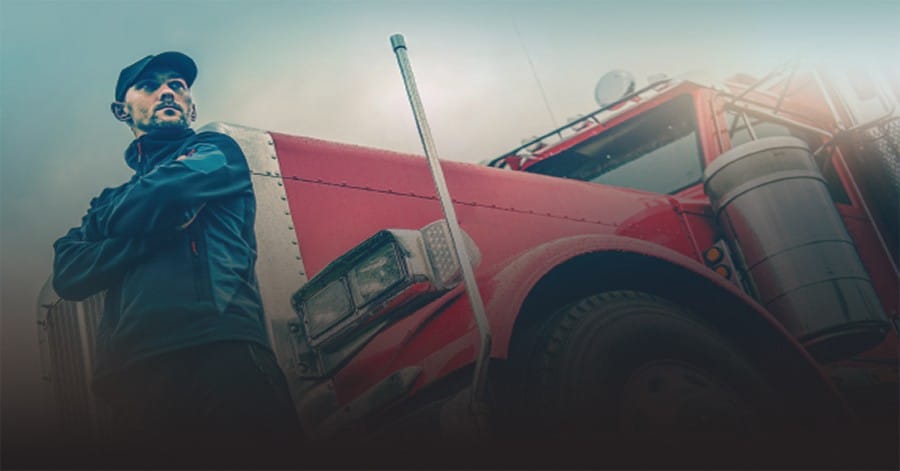The transportation sector seems to have become an ever changing industry as regulations and the technology required continues to advance. With this being said, while there are many who embrace these changes by staying up to date with telematics and regulations, some still choose to wait before they implement any changes. When it comes to using an electronic logging device (ELD) or an automatic onboarding recording device (AOBRD), individuals within the industry no longer have a choice about switching. Instead, the Federal Motor Carrier Safety Administration (FMCSA) and the Canadian Council of Motor Transport Administrators (CCMTA) are now strictly enforcing the new regulations and technologies.
Said regulations focus on favouring electronic logging devices while phasing out automatic onboarding recording devices. This change means that drivers and fleet managers will need to check which device they use and possibly update it if it does not meet the new guidelines. To be specific, if an AOBRD was installed prior to December 18, 2017, the vehicle will have until June 21, 2021, to switch to an ELD. However, if the vehicle was not using AOBRDs previous to December 2017, the must switch to ELDs must be made by December 16, 2019.
Benefits Of Switching From An AOBRD To An ELD
Regardless of when you installed a recording device, if it’s not an ELD, you will need to update your device at some point in the future. With this being said, why not install an electronic logging device sooner rather than later? By doing so, we’re confident that you’ll be able to see noticeable benefits such as reduced stress, better management and cost savings.
Reduced Stress
When fleets transition from AOBRDs to ELDs well before their transition deadline, managers and drivers can expect to feel less stress. This is specific to individuals not having to worry about the possibility of not being compliant with new regulations and facing consequences that not only halt work, but can cost them thousands.
The consequences of not complying are:
- Expensive fines,
- Drivers being placed OOS (Out-Of-Service),
- Additional paperwork,
- And even lowered CSA scores.
As well, it’s worth highlighting that new ELDs often come with innovative solutions to make management easier. Meaning, managers and owners can better organize their fleet to boost productivity and reduce administrative tasks as reports can be automated.
Better Management
As previously mentioned, ELDs provide fleet managers with better management possibilities. Specifically, managers can better organize their fleets to essentially increase productivity and boost efficiency. This is due to the mass amounts of data that electronic logging devices collect in comparison to automatic onboarding recording devices. For example, when a fleet uses ELDs, drivers could be notified of maintenance checks that are predicted by forecasts, provided best transportation routes based on road conditions, and even have two-way communication with their managers while on the road.
Cost Savings
Transitioning your fleet from automatic onboarding recording devices to electronic logging devices can bring numerous financial benefits as well. While the upfront cost of this new technology may seem daunting for some, in the long term, fleet managers can save money. Not only are drivers automatically eliminating the possibility of being fined as they are compliant, but fleet managers can better organize or manage their fleets (as briefly mentioned) to maximize profits. So again, drivers will take the fastest routes, better maintain their vehicles to reduce repair downtime, and even automate automotive reporting duties.
How Automatic Onboarding Recording Devices And Electronic Logging Devices Differ
- While AOBRDs do collect data, ELDs collect more information on a grander scale such as vehicle condition and driver behaviour.
- ELDs are able to complete simple data transferring as they can harness wireless web, email, USB2.0 and Bluetooth capabilities.
- ELDs allow for increased monitoring as they automatically record driving time once the vehicle begins moving or is idling.
- Editing or history changes require annotations while using an ELD to better provide more information about the trip.
- Alert notifications are made if there is a fault code or malfunction recognized by the ELD in use.
Your AOBRD To ELD Checklist
 Do Your Research
Do Your Research
You may find that certain devices will better suit your needs now and in the future as your company grows. This means finding an ELD that is third-party certified and works for any vehicle.
Remember, when it comes to ELDs, you’re making an investment in the growth of your company!
 Complete The Proper Training
Complete The Proper Training
While installation is fairly straightforward, it’s critical to train your team properly if you would like your ELD to truly benefit your company. This includes training your office team and managers in how to use the device, as well as your drivers.
 Installation
Installation
Confirm that every commercial vehicle that meets the criteria stated in the ELD mandate has the device properly installed. As well, ensure that your team has the correct software installed on their devices so they can take advantage of the solutions.
 Stay Up-To-Date
Stay Up-To-Date
Ensure you’re using your device to its fullest potential by staying on top of industry news and software updates. Sometimes users can overlook major features or updates as they’re simply not aware of how it can help them!
Still looking for another incentive to switching your fleet from using an AOBRD to an ELD? Keep reading!
We understand that the upfront cost of transitioning can sometimes deter managers from switching, however we have a promotion to help!
Get a Free GO Device & Harness with our ELD Promotion that runs until December 16, 2019 – save hundreds for your fleet!
If you’re interested in learning more about this promotion, check it out!



